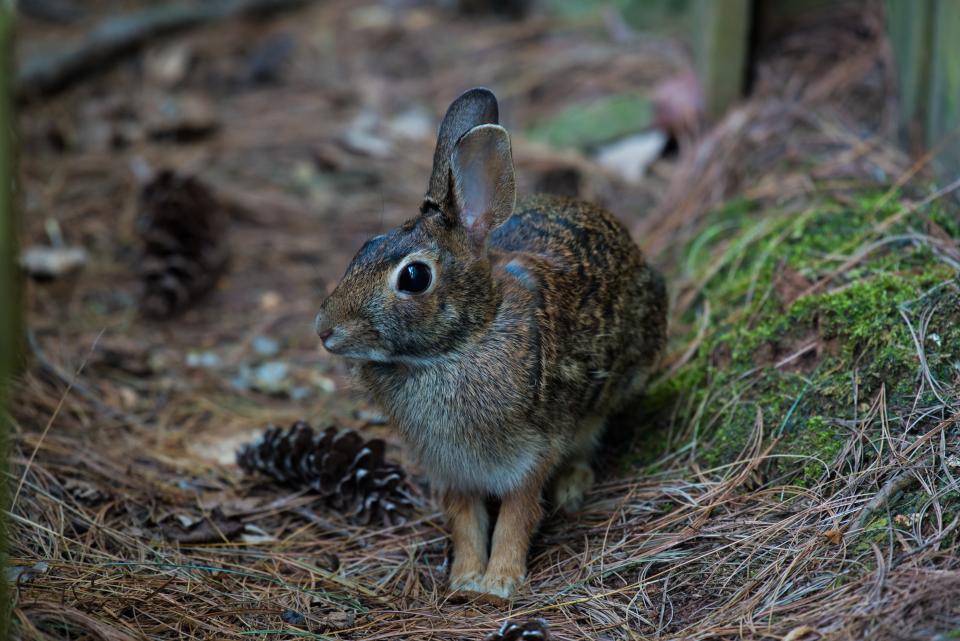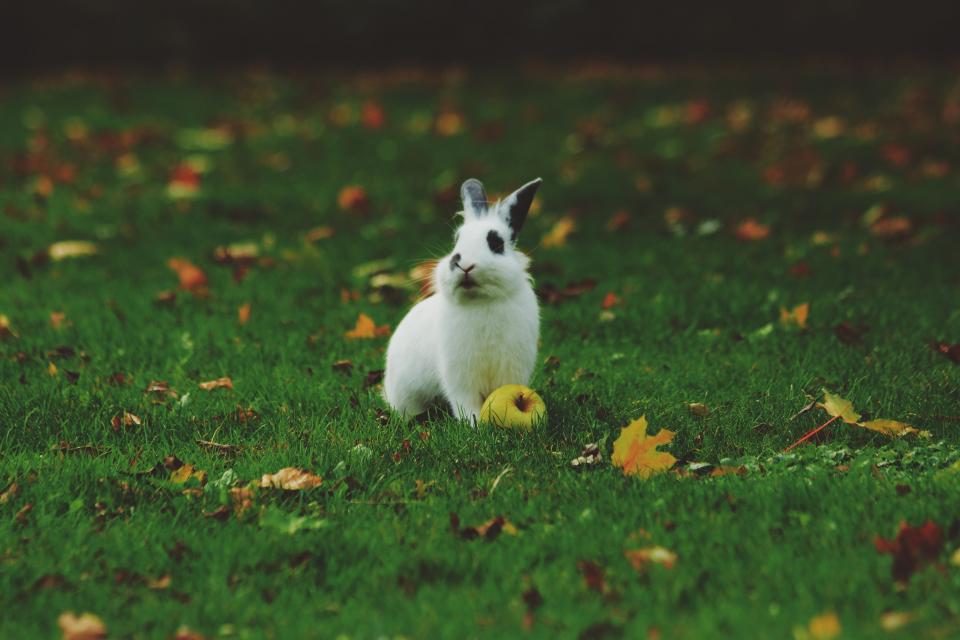Part 1: The Basics of Rabbit Lifespan

1.1 Average Lifespan: A General Overview
- Domestic rabbits typically have an average lifespan of 5 to 8 years.
- However, this is just a general range, and individual rabbits can live significantly longer or shorter depending on various factors.
1.2 Factors Influencing Lifespan: A Deeper Dive
- Genetics play a crucial role, with some breeds naturally predisposed to longer lifespans than others.
- Environmental factors like housing, exercise, and socialisation greatly impact overall health and well-being.
- Regular veterinary check-ups, vaccinations, and prompt treatment of health issues are vital for longevity.
- Lifestyle choices, including diet, exercise, and stress levels, also contribute to lifespan.
Part 2: Breed Matters: Exploring the Role of Genetics

2.1 Dwarf Breeds: Shorter Lifespans
- Dwarf rabbit breeds, such as the Netherland Dwarf and the Lionhead, tend to have shorter lifespans, averaging around 4 to 6 years.
- Their smaller size and faster metabolism can contribute to a faster aging process.
2.2 Larger Breeds: Potential for Longer Lives
- Larger breeds like the Flemish Giant and the Dutch rabbit often have longer lifespans, potentially reaching 8 to 10 years.
- Their slower metabolism and larger body size may contribute to their longevity.
2.3 Specific Breeds with Notable Lifespans
- The Dutch rabbit, known for its compact size and docile nature, is often cited as a breed with a longer-than-average lifespan.
- The English Angora, with its luxurious coat, also tends to have a longer lifespan than some other breeds.
2.4 Responsible Breeding: Ensuring Health and Longevity
- Responsible breeders screen for genetic health issues, reducing the risk of inherited conditions that can impact lifespan.
- Choosing a rabbit from a reputable breeder increases the chances of a healthy and long-lived companion.
Part 3: The Power of Environment: Creating a Healthy Habitat
3.1 Housing: Providing Adequate Space and Safety
- Rabbits need a spacious and secure hutch or enclosure, with ample room for hopping and running.
- The housing should be draft-free and protected from extreme temperatures.
- A safe, comfortable environment reduces stress and promotes well-being.
3.2 Exercise: Essential for Physical and Mental Health
- Daily exercise is crucial for maintaining muscle mass, preventing obesity, and stimulating mental alertness.
- Provide a large playpen or allow supervised time in a rabbit-proofed room for free-range hopping and exploring.
3.3 Socialisation: The Importance of Companionship
- Rabbits are social animals and thrive in companionship with other rabbits or humans.
- Providing social interaction reduces loneliness and promotes mental well-being.
- Properly introducing rabbits can create a harmonious and enriching social environment.
3.4 Environmental Enrichment: Keeping Things Interesting
- Provide toys, tunnels, and hiding places to keep your rabbit entertained and engaged.
- Stimulating their minds with mental challenges can improve overall quality of life.
Part 4: Nutrition: Fueling a Long and Healthy Life
4.1 A Balanced Diet: The Foundation for Longevity
- Hay should form the cornerstone of a rabbit's diet, providing essential fiber for digestive health and tooth wear.
- Fresh vegetables should be offered daily, providing vitamins, minerals, and moisture.
- Pellets should be used sparingly as a supplement, as they can be high in calories and contribute to obesity.
4.2 Avoiding Harmful Foods: Protecting Your Rabbit's Health
- Sugary treats, processed foods, and certain fruits and vegetables can be harmful to rabbits.
- Educate yourself on the best and worst foods for rabbits to ensure a safe and healthy diet.
4.3 Water: The Lifeline of Hydration
- Fresh, clean water should always be available to your rabbit.
- Ensure the water bottle or bowl is regularly cleaned to prevent bacteria growth.
4.4 Dietary Considerations for Senior Rabbits
- As rabbits age, their dietary needs change.
- Consider high-quality senior rabbit food or supplements to provide the necessary nutrients for their aging bodies.
Part 5: Essential Healthcare: Preventative Measures and Prompt Treatment
5.1 Regular Veterinary Check-ups: Catching Issues Early
- Regular veterinary check-ups are crucial for early detection and treatment of health issues.
- Establish a relationship with a rabbit-savvy veterinarian who can provide comprehensive care.
5.2 Vaccinations: Protecting Against Diseases
- Rabbits should be vaccinated against diseases like Rabbit Haemorrhagic Disease (RHD) and Myxomatosis.
- Vaccinations help prevent serious illness and improve overall health.
5.3 Dental Care: Essential for Lifelong Health
- Rabbit teeth continuously grow and require regular trimming to prevent overgrowth, which can lead to pain, infection, and difficulty eating.
- Veterinarians can perform dental care procedures to maintain healthy teeth.
5.4 Parasite Control: Preventing Infections
- Rabbits can be affected by both internal and external parasites, which can impact their health and lifespan.
- Regular parasite control measures, as recommended by your veterinarian, are essential.
Part 6: Identifying Signs of Ageing: Recognizing Changes in Your Rabbit
6.1 Physical Changes: Subtle Indicators of Age
- Weight loss or gain can be a sign of age-related health issues.
- Decreased activity levels and changes in coat condition can also indicate aging.
6.2 Behavioural Changes: Shifts in Personality
- Increased sleepiness and a loss of appetite are common signs of aging in rabbits.
- Changes in social interactions and a decrease in playfulness can also occur.
6.3 Health Issues: Age-Related Conditions
- Senior rabbits are more susceptible to illness and may develop age-related conditions, such as arthritis, heart disease, and kidney problems.
Part 7: Caring for Senior Rabbits: Providing Special Attention
7.1 Dietary Adjustments: Meeting Changing Nutritional Needs
- Adjust the diet to accommodate a senior rabbit's changing digestive system and decreased energy requirements.
- Consider offering softer hay, higher-quality pellets, and smaller meals more frequently.
7.2 Environmental Modifications: Creating a Comfortable Space
- Ensure easy access to food, water, and litter boxes to minimize strain on aging bodies.
- Provide a soft, comfortable bedding to support their joints and reduce pressure points.
7.3 Veterinary Monitoring: Staying Proactive
- Schedule more frequent veterinary check-ups to monitor their health and address any age-related issues promptly.
Part 8: FAQs: Addressing Common Questions about Rabbit Lifespan
8.1 What is the longest a domestic rabbit has lived?
The longest recorded lifespan for a domestic rabbit is 18 years, although this is an exceptional case.
8.2 Can I tell how old my rabbit is by looking at its teeth?
While rabbit teeth continuously grow, it's challenging to determine exact age based solely on teeth. However, a veterinarian can assess the condition of the teeth to estimate age.
8.3 Are there any specific breeds known for longevity?
Larger breeds, such as the Flemish Giant and the Dutch rabbit, are often known to live longer than dwarf breeds.
8.4 How can I make sure my rabbit lives a long and healthy life?
By providing a nutritious diet, ample exercise, enrichment, regular veterinary care, and a loving environment, you can significantly improve your rabbit's chances of enjoying a long and happy life.
8.5 What are the signs of a rabbit nearing the end of its life?
Signs include loss of appetite, weight loss, lethargy, decreased grooming, and changes in breathing. It's crucial to seek veterinary attention if you notice these changes.
Everyone is watching
-

Do Rabbits Lay Eggs? (The Surprising Truth)
OTHER TYPES OF PETSThis article will unravel the common misconception that rabbits lay eggs, exploring the fascinating world of r...
-

Can Rabbits Eat Grapes? A Guide to Safe Rabbit Treats
OTHER TYPES OF PETSThis comprehensive guide will explore the safety and suitability of grapes for rabbits, providing detailed inf...
-

What's a Group of Rabbits Called? (A Comprehensive Guide)
OTHER TYPES OF PETSThis article delves into the fascinating world of rabbits, exploring the various terms used to describe a grou...
-

Predators That Hunt Rabbits: A Guide to Natural Enemies
OTHER TYPES OF PETSI've always been fascinated by the circle of life, that delicate dance between predator and prey. Growing up ...
-

Are Rabbits Nocturnal Animals?
OTHER TYPES OF PETSThe question of whether rabbits are nocturnal animals is a fascinating one, with a surprisingly complex answer...
